American Italian Historical Association Celebrates 40 Years of Intellectualism!
This past weekend in Denver, Colorado, 1-3 November, the American Italian Historical Association (AIHA) held its 40th annual conference on Italian/American Studies. Interdisciplinary in origin, this year’s conference included papers and sessions on Italians in the West (specifically, Colorado), re-making Italian/American history, the challenges of setting up archives, re-visiting Sacco and Vanzetti, investigating new expressions of italianità through visual media such as “Hip Wop,” cinema, and “Italian” TV cooking shows, and many other topics too numerous to mention here. There was also a session on the more than decade-long controversy over the Columbus Day Parade, which presented both sides of the issue (that Columbus not be celebrated) with a third party (an Italian American) calling for a compromise.
This year’s conference was organized by Janet Worrall and Alisa Zahller, in tandem with the local exhibit “Italians in Colorado.” Assisted by numerous local Italian Americans – e.g., Vincent Taglialavore and Mr. and Mrs. Frank Palmeri, life-long residents of the Rocky Mountains – they put together a well-oiled machine, we might say. The sessions were hosted at both the Colorado History Museum and the Denver Pubic Library, two modern, welcoming venues equipped with all the amenities desired, and less than a mile from the conference hotel.
One highlight of the conference was, for many, the keynote lecture delivered by Dr. Paolo Senzi-Isolani, professor of cultural anthropology at St, Mary’s College of Moraga, in California. Entitled “Gone West: An Italian Immigrant Looks Back,” Dr. Sensi-Isolani opened the conference Friday morning, as she nicely interwove her own post-war immigrant experience (having left Italy at 13 years old, spending six years in England, and ultimately settling in the United States) into the historical Italian diaspora of 1880-1924. Throughout her lecture, she indicated the numerous parallels of her own experience to those of our ancestors, underscoring all the while the truly dramatic trials and tribulations of one hundred years ago. To be sure, Dr. Sensi-Isolani’s comparative analysis was not lost on the immigration debate today. Here, too, she pointed out the many uncanny similarities between today’s many issues and those the Italian immigrants faced at the end of the nineteenth and beginning of the twentieth centuries.
Of the many other papers of interest throughout the conference, there was Laura Ruberto’s presentation on HOT films, a.k.a. Hollywood on the Tiber movies, those American cinematic productions made in Italy during the 1950s and early 1960s, presenting to the US viewer a portrait of Italy that was, at best, ideal, excluding all the while references to any of Italy’s then many socio-economic challenges of the time or allusions to the historical, emigrant experience. Another intriguing paper was Jim Periconi’s discussion on the Italian-language press. The many publishing houses of the later nineteenth and early twentieth centuries have all both disappeared, and, for reasons unknown, no one has really studied the phenomenon to date, save for those individual works scholars have examined, such as Bernardo Ciambelli’s Italian-language novels. In like fashion, Elizabeth Zanoni discussed ads for women in the Italian/American press of the 1930s and early 1940s, demonstrating how these ads seemed to conflict to varying degrees with the dominant thought processes of the time.
Of the numerous special sessions, three stand out. Edvige Giunta organized one on archives and the myriad of challenges and problems they pose. The discussion ranged from issues of administration and accessibility to funding and upkeep; i.e., what it means, overall, to maintain a successful holding. A more scholarly session was organized around the figure of Mario Puzo. This session included the likes of our own Robert Viscusi, Josephine Gattuso Hendin, Chris Messenger, and Tom Ferraro, all of whom offered new stimulating viewpoints on Puzo’s first three novels, Dark Arena, The Fortunate Pilgrim, and The Godfather. A third special session celebrated the life and writing of the late Tina De Rosa. Author of the masterfully narrated novel, Paper Fish, which has been critically acclaimed as one of the best novels of modern day United States, De Rosa died before she could publish her second and third novels (rumor has it there are in fact two unpublished manuscripts). The literary world – Italian American as well as United States at large – are less richer because of her passing. Let’s hope someone will be able to get those manuscripts into print one of these days!
Of the other activities that surrounded the scholarly presentations, at the Saturday night dinner, the AIHA recognized past executive director Dominic Candeloro’s lifetime service to the Association with a presentation of a handsome plaque, awarded in tandem by past-present Jerry Krase and 2004 conference coordinator Frank Alduino. The dinner is also the venue for the presentation of AIHA’s Graduate Student Prize. This year it went, deservedly so, to Jennifer Maucione, Ph.D. student in English at Washington State University.
This year’s conference was a wonderful success, to be sure. One of the better conferences I have attended in my twenty-plus years in AIHA. For those interested in the scholarly side, in a year or so this year’s volume of selected essays should be ready for public consumption. In the meantime, we have next year to look forward to going to New Haven, Connecticut, where Southern Connecticut State University’s Professor Michael Vena has offered to host the forty-first conference. The dates are November 6-8, 2008. Information should be available within the next month or so on AIHA’s website (www.aihaweb.org).


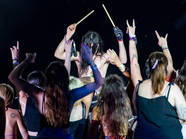

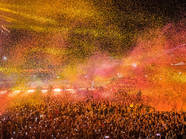




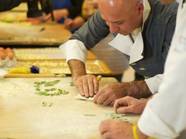
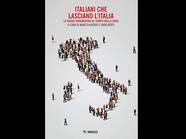
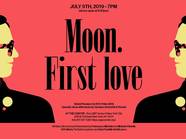
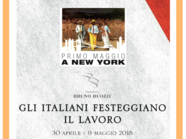
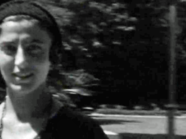






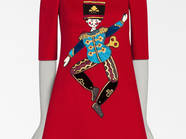

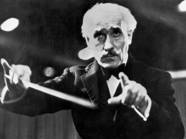



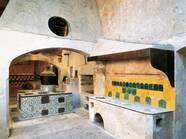
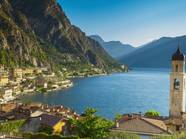

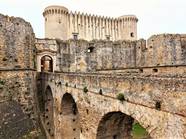




i-Italy
Facebook
Google+
This work may not be reproduced, in whole or in part, without prior written permission.
Questo lavoro non può essere riprodotto, in tutto o in parte, senza permesso scritto.